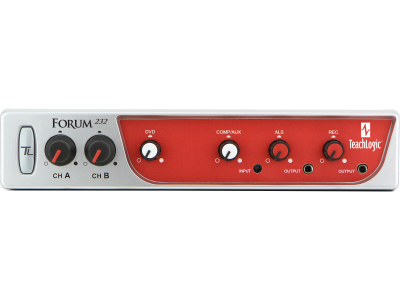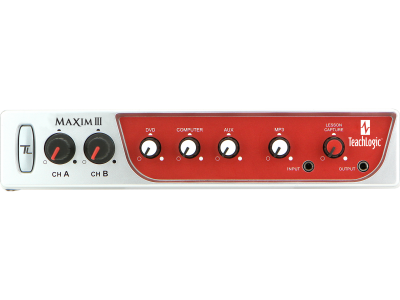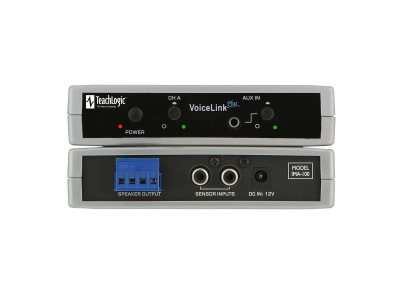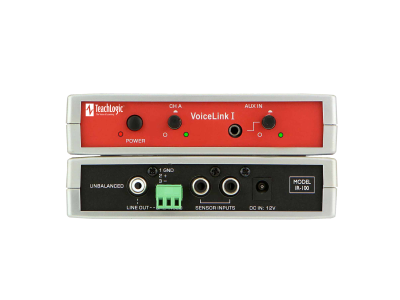
As a school leader, you plan carefully for curriculum, technology, and professional development. But what if one of the biggest barriers to learning isn’t in your budget spreadsheet at all—what if it’s in the very air of the classroom?
Poor classroom acoustics—caused by background noise, reverberation, and the simple distance between student and teacher—are an invisible thief. They quietly steal instructional minutes, widen equity gaps, and wear down your teachers’ voices and energy.
Quick Answer: Poor classroom acoustics can cost every student the equivalent of a full month of learning each year, while increasing teacher fatigue and driving inequities among learners.
How Much Learning Time Is Lost in a Classroom with Poor Acoustics?
In every classroom, the teacher’s voice weakens with distance. Add the hum of HVAC, hallway chatter, and projector fans, and the result is striking. Research supported by the Acoustical Society of America shows that students in classrooms without amplification may miss up to 25% of spoken words.
- A school day includes about 180 minutes of direct instruction.
- If a student misses 25% of words, that equals 45 minutes lost per day.
- Over a 180-day year, that’s 8,100 minutes—or 135 hours.
Put differently, each student loses the equivalent of 22 school days—nearly a full month of learning.
*(45 minutes lost per day × 180 school days = 8,100 minutes. 8,100 minutes ÷ 60 = 135 hours. 135 hours ÷ 6 hours (typical school day) = 22.5 school days lost.)
And the loss isn’t just in minutes. The World Health Organization warns that excessive classroom noise impairs speech intelligibility and disrupts the extraction of information, leading directly to weaker comprehension, memory, and attention.
Why Does Listening Fatigue Reduce Student Achievement?
When students strain to hear, their brains must work double time. According to Cognitive Load Theory, working memory has strict limits. If a child is using it just to decode words, there’s little left to understand concepts.
The impact is clear:
- Reduced comprehension – less capacity to connect ideas or retain information.
- Increased fatigue – mental strain that leaves students drained by midday.
- Behavioral challenges – what looks like inattention is often exhaustion from trying to listen.
ASHA underscores that “Poor acoustical design can result in excessive noise that is disruptive to the learning process and may negatively affect speech perception, student behavior, and educational outcomes.” (ASHA – Classroom Acoustics)
Which Students Are Most Affected by Poor Classroom Audio?
The damage isn’t evenly distributed. Students most at risk include:
- English Language Learners (ELL): Struggling to hear phonemes and syntax while learning content.
- Students with ADHD or attentional issues: Filtering teacher voice from noise is exhausting.
- Students with hearing loss or auditory processing disorders: Roughly 15% of children live with some level of hearing loss, often undiagnosed, per the CDC.
Every noisy classroom unintentionally widens equity gaps.
How Does Poor Acoustics Affect Teacher Wellness?
Teachers are vocal athletes, but their voices weren’t designed to carry for six hours a day. The National Institute on Deafness and Other Communication Disorders reports that teachers face a much higher risk of voice disorders than the general population.
The ripple effects:
- Burnout: Daily vocal strain accelerates exhaustion.
- Absenteeism: Voice-related illness increases sick days and substitute costs.
- Retention risks: Ongoing strain makes an already demanding job even harder to sustain.
What’s the Best Way to Fix Poor Classroom Acoustics?
The solution is simple: classroom audio systems that distribute sound evenly so every student hears clearly—without teachers raising their voices.
With a classroom audio system from TeachLogic:
- Teachers wear a lightweight microphone.
- Audio is distributed through strategically placed speakers.
- The result is clear, intelligible sound across the room, reduced cognitive load for students, and preserved vocal health for teachers.
It’s not about making classrooms louder—it’s about making them fairer and more effective for both students and staff.







